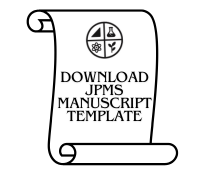Project-Based Learning Governance on Natural Materials Improving the Creativity of Class VIII Students of SMP Negeri 1 Sigumpar
DOI:
https://doi.org/10.21831/jpms.v11i2.49320Keywords:
Project-Based Learning, Science, Creative, Junior High School, STEMAbstract
This research is motivated by the low participation of students of SMP Negeri 1 Sigumpar in participating in the scientific work competition which is their own innovation. All this time, many people think that the students from the countryside are uncreative and difficult to make innovation, and also some people think that the students of Junior High School are too early to start the research. According to Bloom and Anderson"˜s taxonomy, creative competence is not only for the high school level, but has started even at the elementary school level. By learning to create something out of materials that exist in the surroundings, the construction of the child's thinking will be formed and will be increasingly critical and innovative. Science, Technology, Engineering, and Mathematics (STEM)-based learning really needs to be empowered from an early age. This is in accordance with the demands for independent learning that the government is currently planning. STEM-based learning makes students free to be creative and apply their ideas and creations. This research was conducted at SMP N 1 Sigumpar with the aim of finding out whether the application of the project-based learning model on the subject was effective. Nature can be a material for students' innovative work and improve student learning outcomes. The method of this research used a quasi-experimental research design with one group pretest – posttest design. The data collection method that used in this study was a questionnaire, questions and observations in class VIII A as many as 30 students. Data analysis was carried out by descriptive and qualitative. The results showed that the project-based learning increases student creativity and learning results. So that this learning method is very good to be applied because based on the experience of students the more enthusiastic about learning.
Keywords : Project, Learning, STEM, Creative
References
Afriana, J. (2016) Penerapan Project Based Learning Terintegrasi STEM untuk Meningkatkan Literasi Sains Siswa Ditinjau dari Gender Jurnal Inovasi Pendidikan IPA, 2 (2), 2016, 202 - 212
Alviah, Nur. (2015, Desember). Memotret Kearifan Lokal Budaya Banten, Obyek Wisata Batu Kuwung. Diakses tanggal 20 April 2022 dari http://nralviah.blogspot.co.id/2015/ 12/kearifan-lokal-budaya-bantenobyek.html.
Arnyana, I, B, P. (2018). Pembelajaran Sains di Era Revolusi Industri 4.0. Prosiding Seminar Nasional MIPA (8)
Casadei, D., Serra, G., & Tani, K. (2007). Implementation of a Direct Control Algorithm for Induction Motors Based on Discrete Space Vector Modulation. IEEE Transactions on Power Electronics, 15(4), 769-777.
Ekohariadi, & Salim, A. (2010). Perkembangan kemampuan sains siswa indonesia usia 15 tahun berdasarkan data studi PISA. Jakarta: Pusat Penilaian Pendidikan Badan Penelitian dan Pengembangan Kementerian Pendidikan Nasional
Firman, H. (2015). Pendidikan sains berbasis STEM: Konsep, pengembangan, dan peranan riset pascasarjana. Disampaikan pada Seminar Nasional Pendidikan IPA dan PLKH Universitas Pakuan, Agustus 2015. Bandung: Universitas Pendidikan Indonesia
Ward, J., & Peppard, J. (2007). Strategic planning for Information Systems 4th ed. New York: John Willey & Sons.
Game, A. (2001). Creative Ways of Being. In J. R. Morss, N. Stephenson & J. F. H. V. Rappard (Eds.), Theoretical issues in psychology: Proceedings of the International Society for Theoretical Psychology 1999 Conference (pp. 3-12). Sydney: Springer.
Kelley, Todd R. dkk. 2016. A conceptual framework for integrated STEM education. International Journal of STEM Education. 1 - 11. doi:0.1186/s40594-016-0046-z
Kemendikbud. (2014). Buku Kurikulum Pendidikan Tinggi. Jakarta: Direktorat Jendral Pendidikan Tinggi.
Nugraheni.D, 2018, Jurnal Penelitian Pembelajaran Fisika Vol. 9 No. 2 "Pembelajaran Berbasis Proyek (Project Based Learning) Materi Kalor dan Perpindahannya untuk Meningkatkan Kreativitas Siswa"
Robinson, J. K. (2013). Project-based learning: improving student engagement and performance in the laboratory. Analytical and bioanalytical chemistry, 405(1), 7-13.
Yulianty, 2013, "Efektivitas Bahan Ajar Ipa Terpadu Terhadap Kemampuan Berpikir Tingkat Tinggi Siswa SMP", Jurnal Pendidikan Fisika Indonesia 9 (2013) halaman 53-57
Published
How to Cite
Issue
Section
Citation Check
License
Jurnal Pendidikan Matematika dan Sains allows readers to read, download, copy, distribute, print, search, or link to its articles' full texts and allows readers to use them for any other lawful purpose. The journal allows the author(s) to hold the copyright without restrictions. Finally, the journal allows the author(s) to retain publishing rights without restrictions
- Authors are allowed to archive their submitted article in an open access repository
- Authors are allowed to archive the final published article in an open access repository with an acknowledgment of its initial publication in this journal

This work is licensed under a Creative Commons Attribution-ShareAlike 4.0 Generic License.




